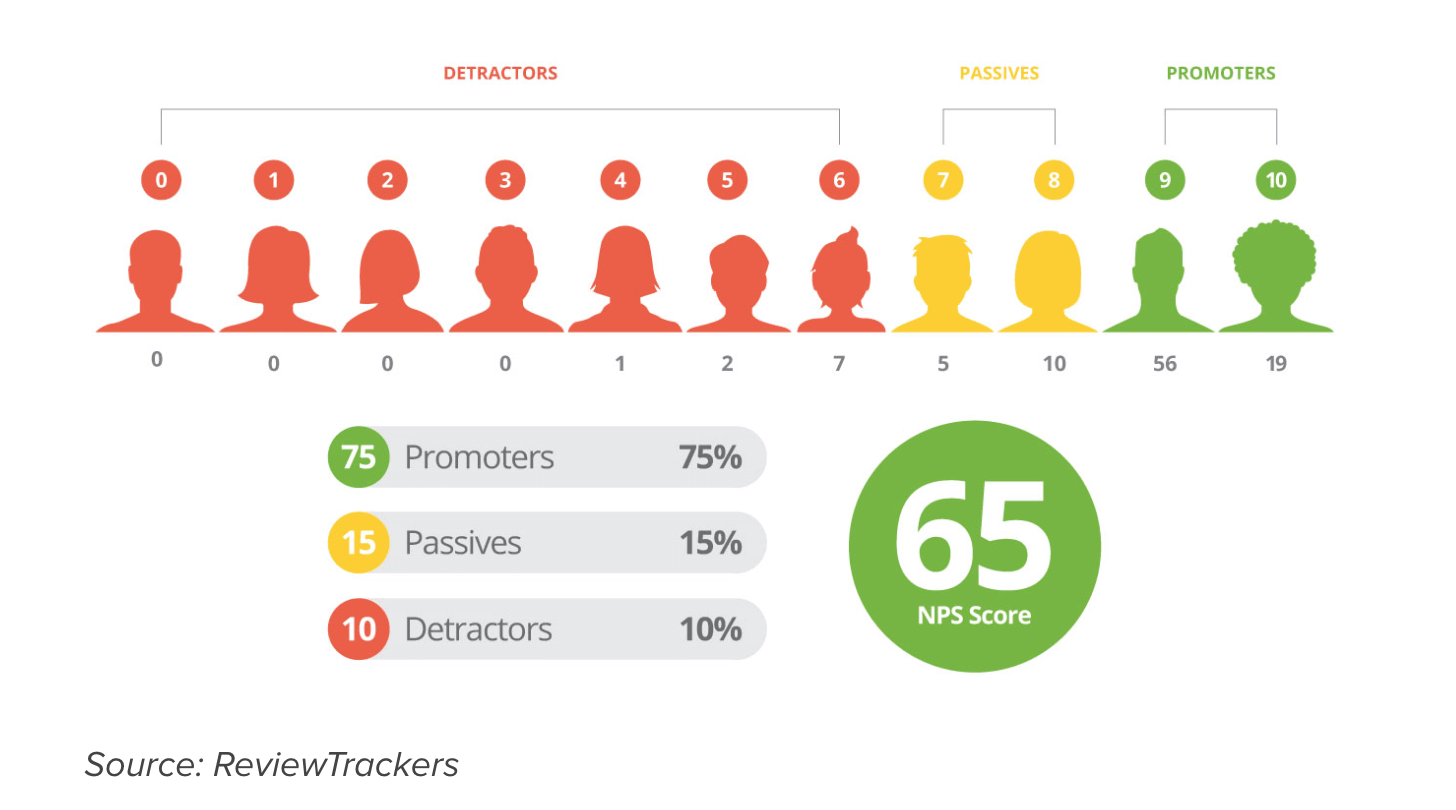
How to Measure and Improve Your NPS Score with Agent Engagement
There are dozens of ways to measure your customers’ satisfaction. But, one metric steps beyond just measuring satisfaction. Your customer Net Promoter Score builds the foundation to help you measure customer advocacy, too.
Undeniably, customer advocacy helps you win more customers. Nearly 90% of customers trust recommendations from their peers when making a buying decision.
And how do you know who’ll recommend your company to their friends and who will take to the Twitterverse to bash you? Your NPS score. Use NPS in your contact center to learn what makes your advocates tick, so you can keep those customer relationships strong and continue to improve.
>> Download Now: Use the data that lives in your contact center to build a better CX
What is your Net Promoter Score?
NPS, though measured with a survey, looks a little different from CSAT surveys. NPS was designed to be as simple to understand as it is effective at measuring company growth and performance. To determine customer loyalty, it asks just one simple question: “How likely are you to recommend us to a friend?”
Customers give a rating from 0-10, with 10 being “extremely likely” to recommend and 0 being “extremely unlikely.” Your promoters are the customers who give scores of 9-10. They’re your loyal fans who will be the first to suggest your company or product to friends.
Loyal customers directly contribute to your company’s profitability. Here are some stats to prove it:
- The top 1% of loyal customers spend over 5x more than the lower 99% of customers.
- The top 10% of loyal customers spend almost 3x more per transaction than the lower 90% of customers.
- Loyal customers spend more in general, and the amount they spend tends to increase with the number of times they’ve shopped at a business.
How can you improve NPS?
Of course, your customers notice if your product or service surpasses their standards. Is it easy to use and intuitive? Do you have fast customer service? Do you keep track of your customer’s history? It’s common sense – you need a good product or service to make a business successful and keep customers happy.
But, what makes a happy customer a loyal customer?
It’s the people behind the product –– the designers, the developers, the leadership, the strategists, the marketing team, the sales team, the support staff. Every person in your company has to work hard and grow to keep your business profitable.
Let me go a step further to emphasize that last group –– the support staff. That’s you and your team. Let’s walk through how your team impacts NPS and what steps you can take to earn more promoters.
1. Learn about your customer advocates
It’s super helpful to know who your most loyal customers are. They’ll offer you honest feedback, be more likely to sit down for user groups or interviews, and they’ll tell you what you can do to keep improving, too. Use your NPS data paired with call recordings, transcriptions, and agent data to learn what’s creating your groups of promoters and detractors.
Tracking your NPS helps you manage your customer loyalty and identify how likely it is that you’ll get recommendations from your customers, so you can expand your reach and improve your business. Identify common trends among your biggest advocates, then see how you can repeat those positive experiences for every other customer.
Do customers typically score your company with a 9 or a 10 after they had short wait times and a fast interaction? Or, do longer interactions and fewer callbacks match up to higher scores? Dig into your data to see what’s driving advocacy and what’s creating detractors, so you can eliminate painful experiences.
>> Read Next: How to use customer service data to inform your decisions
2. Understand the impact agents have on your NPS Score
The support team and your contact center are the first and last line of defense. It’s the contact center that has to put out fires and save the face of the company when issues pop up. The contact center has to know your products, services, and your brand inside and out so they can help with any problem.
It’s your team and your agents who talk to your customers day-to-day. Your agents fight to keep the customer happy, even when company mistakes or overlooked errors send frustrations off the charts. Your team’s attitude and skills set the tone for relationships with your customers.
In fact, Dimensional Research found that excellent customer service has the biggest impact on a customer’s level of trust with a company. And, Microsoft reports that across the globe, 96% of consumers say customer service is important to earning their loyalty. Your agents are vital to getting those nines and 10s on your NPS surveys. But, agents won’t be the best advocates for a company they don’t love.
3. Engage your agents to engage your customers
Good work from engaged front-line agents drives loyalty. Engaged agents are happier, more motivated and invested in your company’s success. And when your agents are engaged, your customers become more engaged, too.
About one-in-three people say the most important aspect of customer service is speaking with a knowledgeable and friendly agent. Imagine if every customer was met with a cheerful, satisfied employee, ready to solve any problem. Dimensional Research found 52% of consumers say they’ve made an additional purchase from a company after a positive customer service experience.
But to take advantage of the benefits that come with engaged employees and happier, more loyal customers, it’s crucial that you, as a manager, invest resources to engage your team.
Use these tactics to lay a foundation for employee engagement:
- Employee training
- Better onboarding processes
- Contextual coaching
- In-line training
- Team building
- Improved hiring practices
Measure your agent’s satisfaction with surveys and consistent 1:1 conversations. Pour time and energy into consistent training so you can improve agent performance and your NPS will follow. Your employees will be more than ready to tackle customer problems with a happy attitude, and your contact center will see a higher ROI with more loyal customers.
>> Learn More: Use the data that lives in your contact center to build a better CX
We originally published this post on March 30, 2018, and we updated it for new insight on September 9, 2021.


